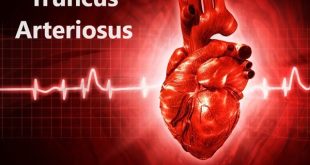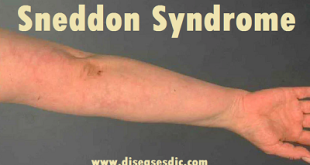Introduction
People with thrombocytopenia have diminished platelets (Thrombocytes) count in the blood. Platelets are blood cells which help for clotting process. Normal platelets count value is from 150,000 and 450,000 per microliter (one-millionth of a liter). About two-third of platelets are released into the blood stream whereas the remaining are typically present in the spleen. Severe thrombocytopenia causes excessive bleeding.
Thrombocytopenia may occur due to the underlying medical conditions:
- Enlarged spleen may entrap high platelets in various conditions such as cirrhosis, myelofibrosis, and, gaucher disease.
- Heparin in the blood can be triggered by body immune system causes low platelet count. This condition is called as Heparin Induced Thrombocytopenia (HIT)
- Non-immune HIT is also pose a reason in which a mild decrease in blood platelets occur.
History
Osler, Hyam, and Bizzozero were found small particles in the blood flow, these were assumed to be bacteria or the red cell fragments. James homer Wright, identified that the platelets are distinct hematopoietic component arising from megakaryotes.
In 1903, William duke described low platelet count in 3 patients, those who were affected with hemorrhagic disease. He created a venous shunt from a healthy donor to a thrombocytopenic recipient and proved that platelet count could rise and bleeding would ceases.
Causes
- The onset of thrombocytopenia occurs when there is no enough production of blood cells in the bone marrow as in leukemia, lymphoma, aplastic anemia and some anemic conditions.
- Infection of Human immunodifficiency virus (HIV), Hepatitis C virus, and Epstein-Barr virus (Cause of mononucleosis) also results in thrombocytopenia.
- When there is massive blood transfusion platelets concentration in the blood may get diluted due to very low platelets in the stored blood.
- Drugs such as heparin, quinidine and diuretics.
- Few antibiotics also cause low platelet count some of them are rifampin, vancomycin, chloramphenicol and trimethoprim/sulfamethoxazole.
- Chemotherapy for leukemia also causes low platelet count in blood.
- Cardiopulmonary byepass surgery builds up thrombocytopenia.
- Disseminated intravascular coagulation within blood vessels, blood poisoning (septicemia) due to gram-negative bacteria, cancer, and traumatic brain damage.
- Bacterial infection of blood (septicemia).
- Hemolytic-uremic syndrome.
- Thrombotic thrombocytopenic purpura. In this disease condition small blood clots are formed unfortunately, using large number of platelets throughout the body.
- Some genetic conditions such as Wiskott-Aldrich and May-Hegglin syndromes lead to low platelet count.
- Our body destroys its own platelets in the case of autoimmune diseases such as immune thrombocytopenia (ITP)
Risk factors of Thrombocytopenia
- Pregnancy women develop mild thrombocytopenia. The exact cause is unknown.
- Exposure to toxic chemicals such as arsenic, benzene, and pesticides.
- Alcoholism- alcohol reduces the production of platelets.
- Taking foods that are low in iron, vitamin B12, or folate makes a temporary reduction in platelet count.
- Frequent blood transfusion and dialysis.
Symptoms
If the thrombocytopenia is mild it may not have symptoms and it can be detected only through routine blood tests for some other reasons. If a person has low platelet counts some of the signs and symptoms include:
- Petechiae (small reddish spots on skin due to the superficial bleeding into the skin)
- Fatigue
- Jaundice
- Purpura (easy or excessive bruising)
- Blood in stool or urine
- Enlarged spleen
- Nosebleeds
- Deep vein thrombosis
- Nonstop bleeding
- Unusual heavy menstrual bleeding
- Continuous bleeding from the gums or nose
- Prolonged bleeding from cuts
- Bloody or very dark vomit
Symptoms
Complications of Thrombocytopenia
- After a cut or injury, excessive bleeding may occur that causes hemorrhage and major blood loss
- Dangerous internal bleeding can occur when the platelets fall below 10,000 platelets per liter, perhaps blood bleeding through your gastrointestinal tract (digestive system)
- In rare cases, severe thrombocytopenia may cause bleeding in brain which can be fatal
- Other complications may occur due to other underlying factors or conditions such as autoimmune thrombocytopenia leads to lupus may be associated with other complications of lupus
Diagnosis and test
Medical history: Your doctor may ask about factors, medical history and symptoms such as:
- Medication that you took, including over the counter medicines and whether you drunk beverages that contain quinine
- General eating habits
- Any family history of low platelets
Physical examination: Doctor will perform the physical examination to look for skin red spots, bruises, spots of blood on the skin and other signs of low platelets. Other signs of infections like fever or rashes will be checked.
The following tests may be done:
Blood test: The complete blood count test that measures the number of platelets, white blood cells and red blood cells in your blood. If the person has thrombocytopenia, the results of the test will show low platelets level.
Blood smear: Blood smear to see the appearance of the platelets under the microscope and to see how healthy they are.
Bone marrow tests: this test is to check the bone marrow is healthy or not and to make sure that bone marrow is producing enough blood cells. There are two bone marrow tests are bone aspiration and biopsy. For aspiration, your doctor will take a small amount of fluid from bone marrow by the needle. For a biopsy, your doctor will take a small sample of bone marrow tissue.
Other tests: Your doctor may recommend blood clot tests such as prothrombin time (PT) and Partial Thromboplastin Time (PTT) test to see whether your blood is clotting properly. Your doctor may suggest taking ultrasound to see whether you’re his or her spleen enlarged.
Treatment and medications
The treatment depends on the cause and severity of your condition. If your condition is mild, treatment is not needed. Treatments may include as follows:
Blood or platelet transfusion
Blood or platelet transfusion is needed when the condition is at high risk of bleeding. During the transfusion, your lost blood is replaced with platelets and red blood cells.
Splenectomy
Splenectomy is the surgery to remove the spleen. This can be done when your medicines don’t help with the condition. This surgery is mostly used for an adult with immune thrombocytopenia.
Medicines
Medicines are the first course of treatment. If you have immune thrombocytopenia, your doctor may prescribe drugs to increase your platelets are corticosteroids. These can be given through a vein or by mouth. One example of this type of medicine is prednisone.
Your doctor may prescribe immunoglobulins or medicines like rituximab to suppress your immune system. This can be given through a vein. Other medicines such as eltrombopag or romiplostim, to help your body make more platelets.
Home remedies
Prevention of Thrombocytopenia
Condition can’t be prevented. But you can take steps to prevent the health problems that associated with thrombocytopenia.
- Avoid drinking alcohols, it will slow downs the platelet production
- Avoid activities and sports that may cause injury and cut that leads to heavy bleeding
- Use soft toothbrush to prevent bleeding from gums
- Avoid medicines that reduce your platelet count
- Try to avoid contact with the chemical that slows down the production of palates. Chemicals such as pesticides, arsenic, and benzene
- Before getting vaccinated for viruses talk with your doctor to avoid the vaccines that affect your platelet counts
 Diseases Treatments Dictionary This is complete solution to read all diseases treatments Which covers Prevention, Causes, Symptoms, Medical Terms, Drugs, Prescription, Natural Remedies with cures and Treatments. Most of the common diseases were listed in names, split with categories.
Diseases Treatments Dictionary This is complete solution to read all diseases treatments Which covers Prevention, Causes, Symptoms, Medical Terms, Drugs, Prescription, Natural Remedies with cures and Treatments. Most of the common diseases were listed in names, split with categories.








thank you for this, it looks very interesting
Very interested and Educative.But no matter how soft my toothbrush is, it still bleeds.Thank you.
Please consult a dentist.
any specific drug suggest which iz readily available in market and in economic rate
Promacta (eltrombopag), Dexamethasone, Kenalog-40 (triamcinolone injection).
really helpful but should provide more precise drugs information in treatment column.
Thank you for your feedback. Sure we will update about drug information in our future posts.
Nys informative article .deficient in drugs information…i will be waiting for your update
Soon we will update in posts. thank you for your feedback.
It us unfortunate that Papaya leaf juice and Yoga are suggested as home remedies for thrombocytopenia.What scientific evidence do you have to substantiate that claim.?..
Papaya leaf juice has been used in Ayurvedic remedies for ITP for generations, and there is direct research evidence showing higher platelet counts after intense, regular consumption of papaya leaf juice. Research is ongoing on the particular chemical constituents responsible for this platelet boost, but all you need to know is that it works!
My wife bleeds heavily during her monthly periods mostly clots what causes that
If your wife is at age of 45 and above, it might be due to menopause stage or some hormonal changes. Please consult a doctor to get recover.
my grandson have foul smelling clots from his gum and also in his throat he is still in hospital getting weak
Please consult a hematologist.
Thank you for this very thorough information. I have been dealing with one of the forms of thrombocytopenia for 7 years, and have learned some new things that may help.
Good and excelle
nt information I am really thrilled.
My leg was aching from excersize, went to Brisbane but couldnt put in stent so maybe take off leg. i am getting better on my own and specialist has wiped me but my memory bad and leg still aches – suppose to be calcium build up in my veins and is? severe deep veined thrombosis? what to do except keep walking?
please consult a physiotherapist.
My child 7yrs old has chronic itp what I can do
Please consult a doctor to get rid of this problem.
i have itp low plt 14 3yrs i tek prednol 16mg and all cortizone an eltrobpag 50mg rituximab 550ml 2 pc what i do?
Please consult a doctor and get the proper prescription for the illness.
I have ITP, have had it since 1994. I lost both of my kidneys. was on dialysis for 2yrs. Then got my first transplant. Lost that one in 2005 and have been back on dialysis now for 14yrs.. I am due for transplant in September.
I have had ITP since I was a child. I was diagnosed @ 19. For 19 years my doctors couldn’t tell me what was wrong. I have had IVIG therapy, prednisone, folic acid & transfusions. I see an oncologist who diagnosed me @ 19. Lowest count was 14,000. I’m 43 now & still plagued with this nasty bugger. This is definitely not an easy thing to deal with as you have to be super careful in just about every aspect in life. Best of luck to those who have ITP. Very interesting article I must say.
sir thrombocytosis disease explain please
Thrombocytosis is a disorder in which your body produces too many platelets. It’s called reactive thrombocytosis or secondary thrombocytosis when the cause is an underlying condition, such as an infection